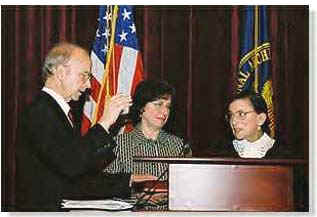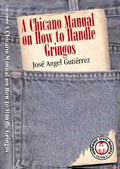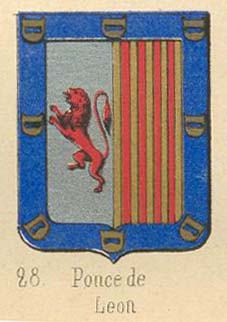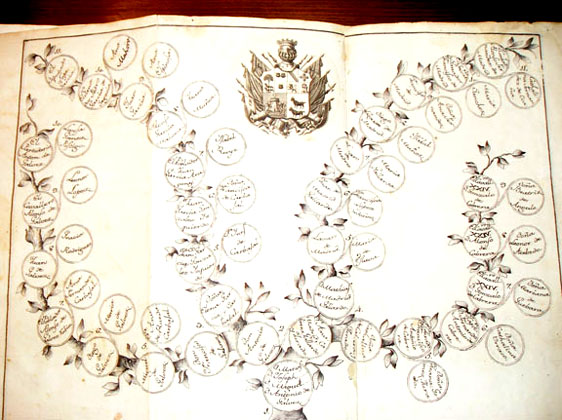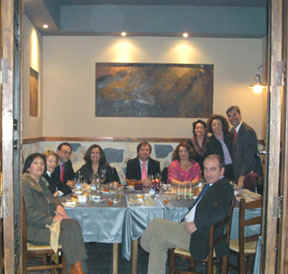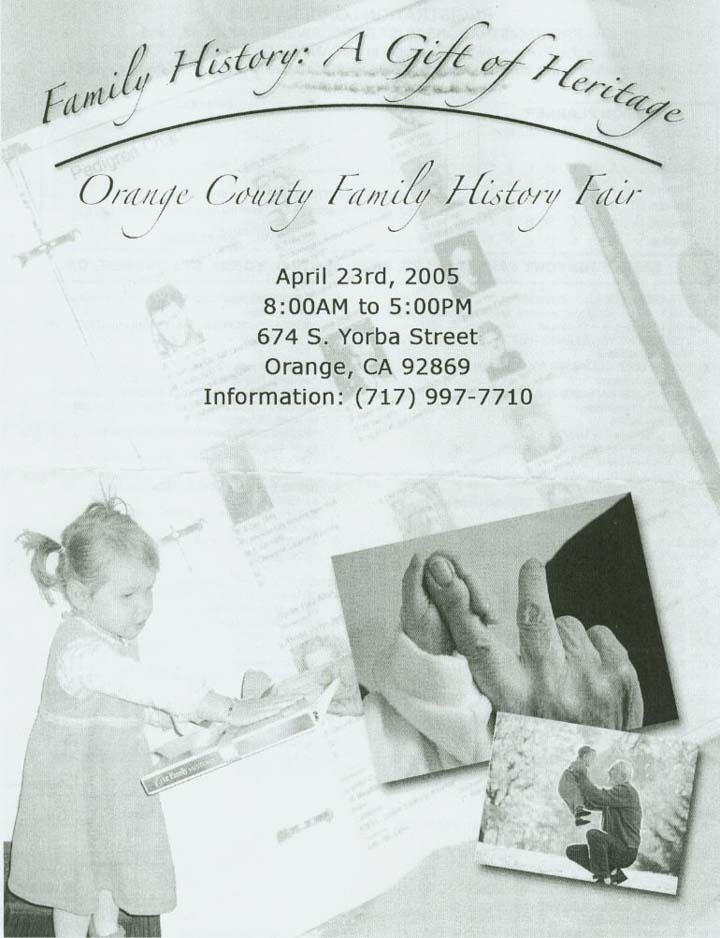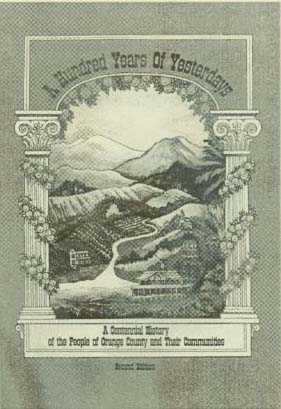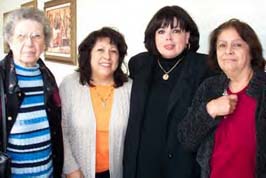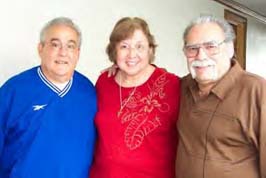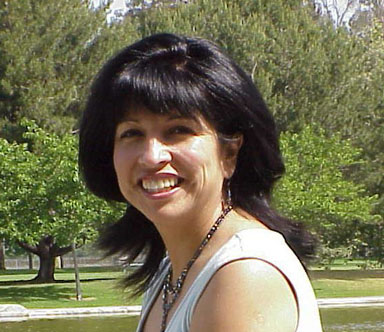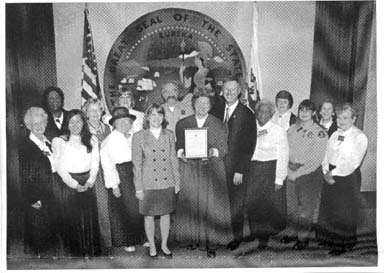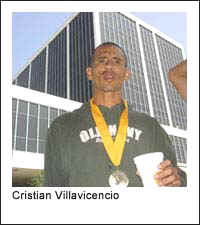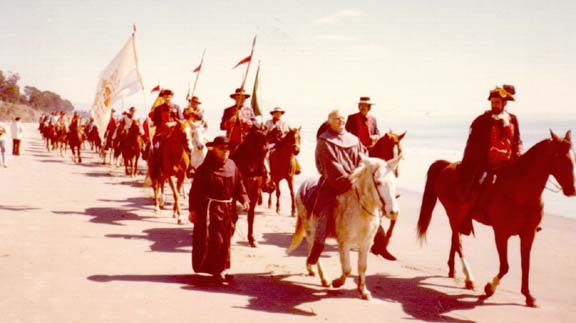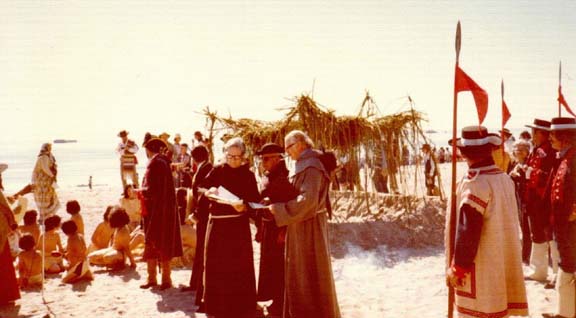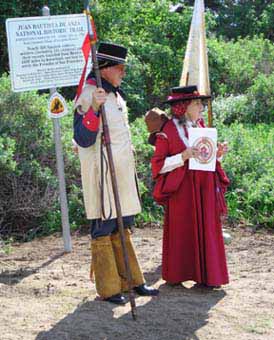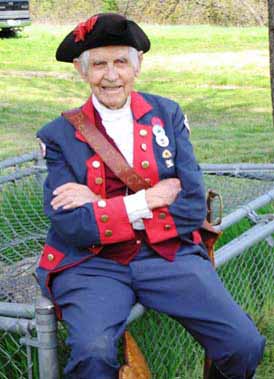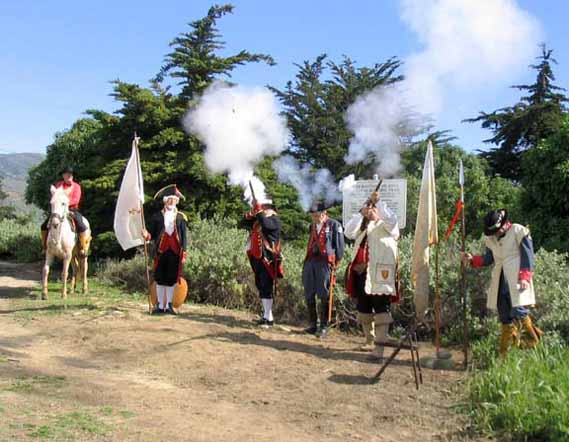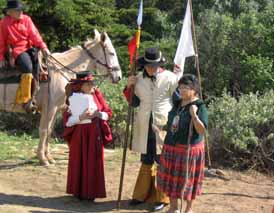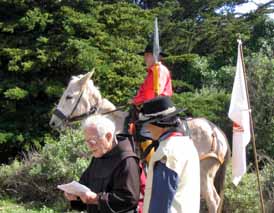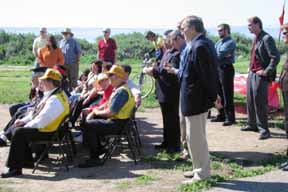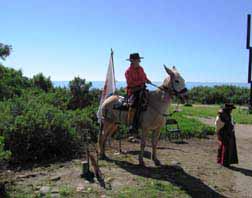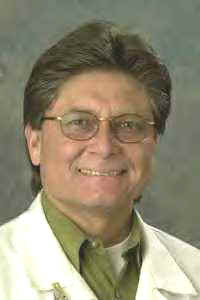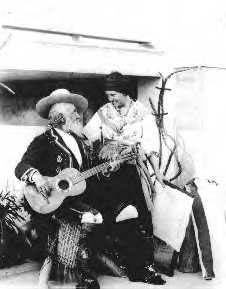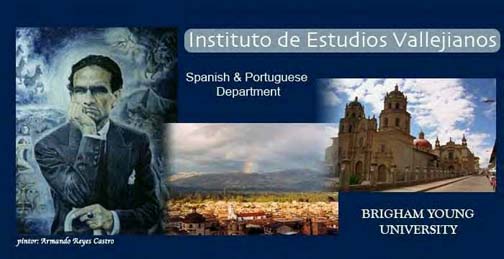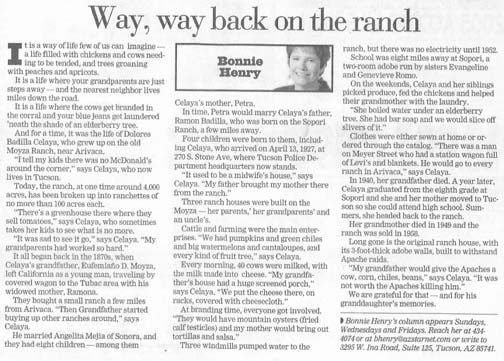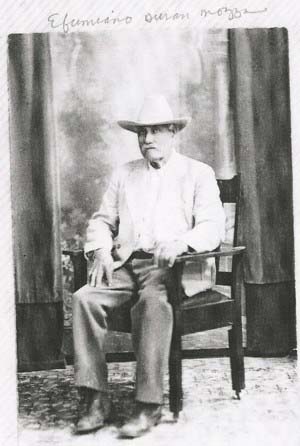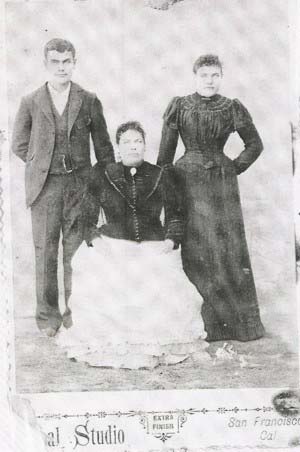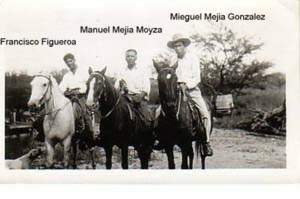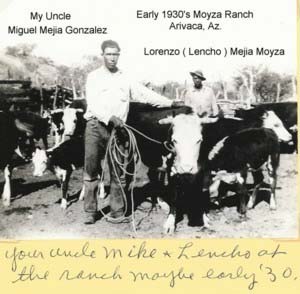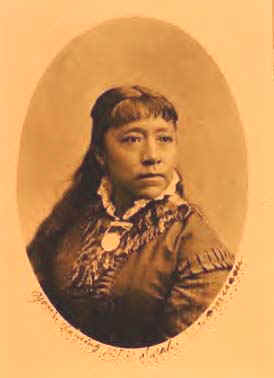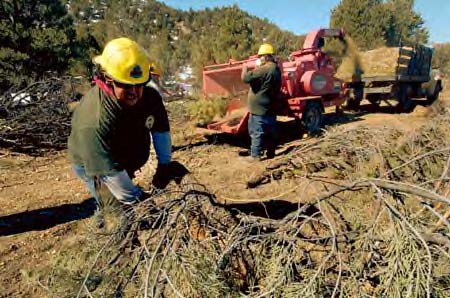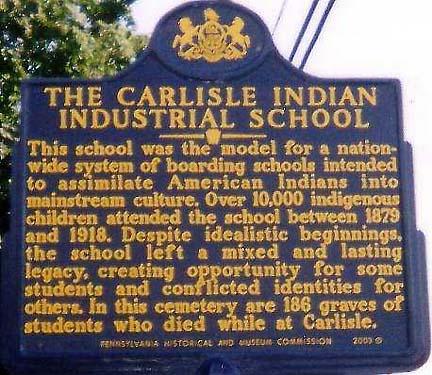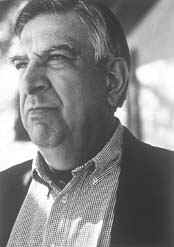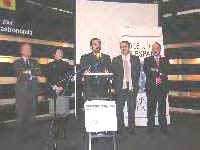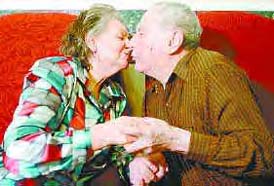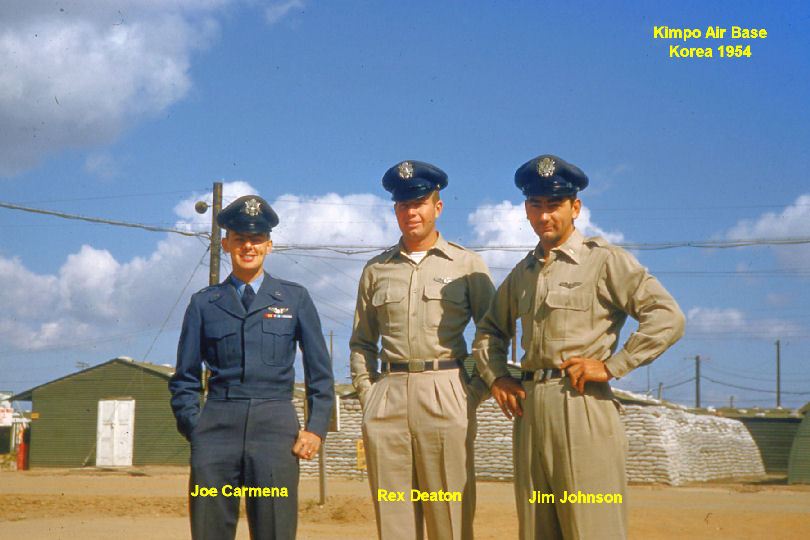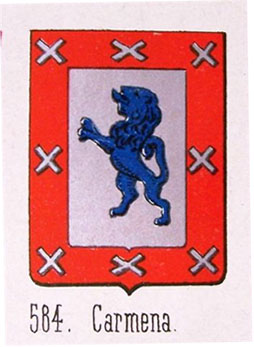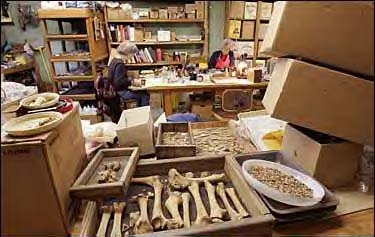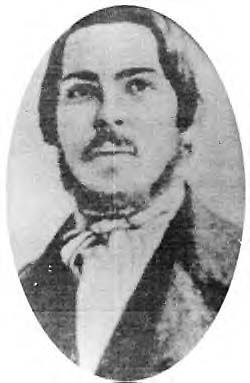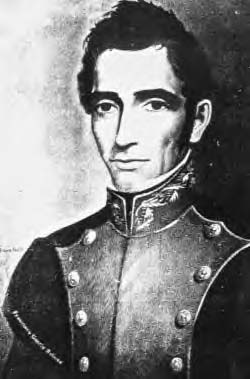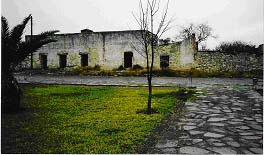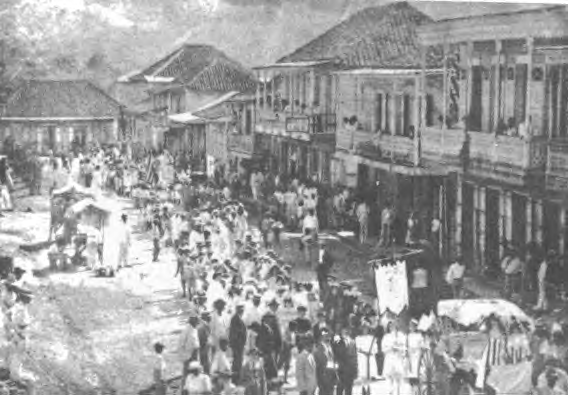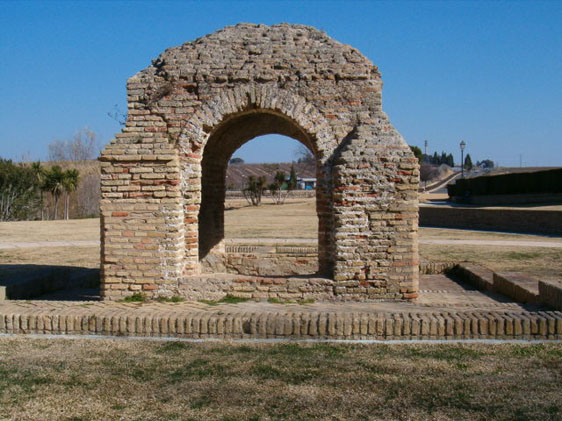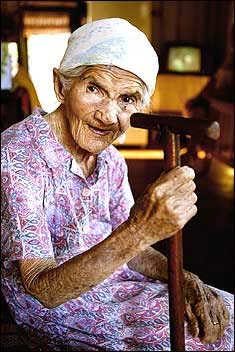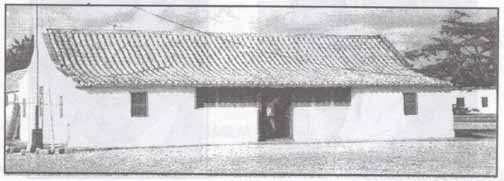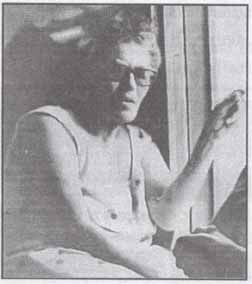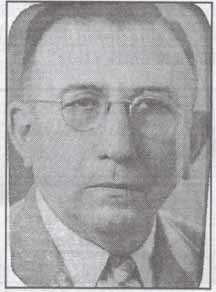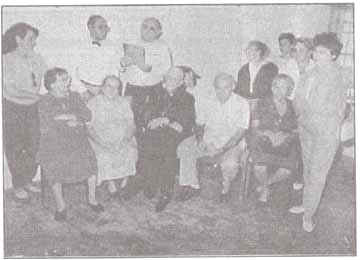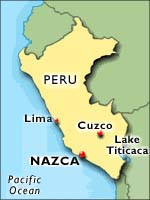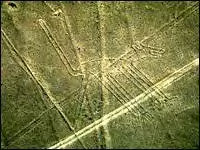|
In an incisive introduction, Gutiérrez analyzes the types of power and
evaluates Chicano and Latino access to power at various levels in U.S.
society. In very plain, down-to-earth language and examples, Gutiérrez
takes pains to make his broad knowledge and experience available to
everyone, but especially to those who want to be activists for
themselves and their communities. For him the empowerment of a minority
or working-class person can transfer into greater empowerment of the
whole community.
This manual penned by the founder of the only
successful Hispanic political party, La Raza Unida, brings together an
impressive breadth of models to either follow or avoid. Quite
often, Gutiérrez's voice is not only the seasoned voice of reason, but
also that of humor, wry wit and satire. If nothing else, A
Chicano Manual on How to Handle Gringos is a wonderful survey of the
Chicano and Latino community on the move in all spheres of life in the
United States on the very eve of its demographic and cultural
ascendancy.
Pluma Fronteriza praises A Gringo Manual on
How to Handle Mexicans as
"a classic in Chicano politics."
Title: A Chicano Manual on How to Handle
Gringos
Author: José Angel Gutiérrez Publication
Date: April 03, 2003
Pages:240 Price: $12.95
Trim: 5 ½ x 8 ½ Format: Trade Paperback ISBN: 1-55885-396-0
FOR MORE INFORMATION: Contact: Mónica M. Parle (713)743-2999
mparle@uh.edu
http://www.artepublicopress.com
Arte Público Press is the nation’s largest and
most established publisher of contemporary and recovered literature by
U.S. Hispanic authors. Its imprint for children and young adults,
Piñata Books, is dedicated to the realistic and authentic portrayal of
the themes, languages, characters, and customs of Hispanic culture in
the United States. Books published under the imprint are designed to
serve as a bridge from the home culture to that of the school, as well
as to support family literacy and elementary school education. Based at
the University of Houston, Arte Público Press, Piñata Books and the
Recovering the U.S. Hispanic Literary Heritage project provide the most
widely recognized and extensive showcase for Hispanic literary arts and
creativity. For more information, please visit our website at www.artepublicopress.com.
|
|
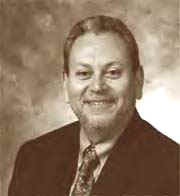
|
JOSE ANGEL
GUTIERREZ, PhD, JD
Dr. Jose Angel Gutierrez is a 1962 graduate of Crystal City High
School in Crystal City, Texas. He has also earned degrees from Texas
A&M University at Kingsville (B.A.-‘66), St. Mary’s University
in San Antonio, Texas (M.A.-‘68), University of Texas at Austin
(Ph.D.-‘76), and University of Houston, Bates College of Law, Houston,
Texas (J.D.-‘88).
|
|
He has done other postdoctoral work at Stanford
University, Colegio de Mexico, University of Washington, University of
Texas-Austin and Centro de Estudios Economicos y Sociales Del Tercer
Mundo in Mexico City, Mexico. He is a Professor of Political Science at
University of Texas-Arlington.
His book publications include El Politico: The Mexican American
Elected Official (El Paso: Mictla Publications, 1972); A Gringo
Manual on How to Handle Mexicans (Piedras Negras, Coahuila, Mexico:
Imprenta Velasco Burkhardt, 1974); A War of Words (co-authored)
(Westport, Connecticut: Greenwood Press, 1985); The Making of a
Chicano Militant: Lessons from Cristal (Madison: University of
Wisconsin Press, 1998); My Struggle for the Land: Autobiography of
Reies Lopez Tijerina, (translated and condensed, (Houston: Arte
Publico Press, 2000); a revised and expanded edition of A Gringo
Manual on How to Handle Mexicans (Houston: Arte Publico Press,
2001); A Chicano Manual on How to Handle Gringos, (Houston: Arte
Publico Press, 2003) and the most recent, Chicanas in Charge: Texas
Women in the Public Arena. (Co-authored) (Walnut Creek, CA: Altamira
Press, forthcoming 2005) and autobiography for a youth market, Chicano
Leader: Jose Angel Gutierrez (Houston: Arte Publico Press, 2005). He
also has written several articles and book chapters over the years, the
most recent being "Chicano Music, Evolution and Politics to
1950," in The Roots of Texas Music, Eds. Lawrence Clayton
and Joe Specht, (College Station: Texas A & M University Press,
2003); "The Texas Courts," in Texas Politics:
Individuals Making A Difference, 2ed. (Boston: Houghton-Mifflin,
2005 and 1st. ed. 2002); "Binacionalismo en el
siglo XXI: Chicanos y mexicanos en los Estados Unidos," (Fondo
Editorial Huaxacac, Oaxaca, Oaxaca, Mexico, 2000); "Experiences of
Chicana County Judges in Texas Politics: In Their Own Words," Frontiers:
A Journal of Women Studies, 20:1, Spring 1999; and, "Los dos
Mexicos," Extensiones: Revista Interdisciplinaria de la Universidad
Intercontinental, Mexico D.F., Mexico 4:1 y 2. 1997.
He was a Visiting Scholar at Our Lady of the Lake University (San
Antonio, Texas) during Spring 2004 and was at work on three manuscripts:
The Only Ones: Chicano Political Leadership in Texas, 1950-2004 which
is based on 185 oral history ethnographic interviews he conducted
between 1996 and 2004. See 77 of these digitized ethnographic interviews
at http://libraries.uta.edu/tejanovoices/
; Albert Pena, Jr.: Dean of Chicano Politics in the Southwest;
and, Chicana Student Leader: Severita Lara. He also is collecting
the writings of Albert Pena, Jr., for a possible edited volume on the
writings and speeches of this political figure.
During the mid 1960s through the Chicano Movement and to the present
time, Dr. Gutierrez was lead organizer, founder and co-founder of
several organizations such as the Mexican American Youth Organization
(MAYO), Mexican American Unity Council (MAUC), Ciudadanos Unidos, Obreros Unidos Independientes, La Raza
Unida Party, Winter Garden Project, Becas Para Aztlan, Oregon Council
for Hispanic Advancement, Northwest Voter Registration and Education
Project, and Grupo de Apoyo para Inmigrantes Latino Americanos (GAILA).
He has been the subject of many articles and film documentaries, the
most recent being "In Search of Aztlan;" the PBS
three-part video series, "CHICANO! The Mexican American Struggle for Civil
Rights;" and, "Schools: The History of American
Education." He is cited for his scholarship and noted in many history and political science books for his activism.
Last November 2003 he debated Pat Buchanan and Jared Taylor, two
well-known white nationalists on Scarborough Country (MSNBC); August 15,
2002 he debated Bill O’Reilly on national television (Fox News) over
immigration; and; previously appeared on the Jerry Springer show
debating racism with representatives of the Ku Klux Klan and Nation of
Islam.
He has received many honors including: "100 Outstanding Latino
Texans of the 20th Century" by Latino Monthly, January
2000; "Distinguished Texas Hispanic" by Texas Hispanic
Magazine, October 1996; and has received the Distinguished Faculty
Award from the Texas Association of Chicanos in Higher Education in June
1995 (re-nominated in 2003); and, also the National Council of La Raza’s
Chicano Hero Award in 1994.
Dr. Gutierrez founded the Center for Mexican American Studies (CMAS)
at the University of Texas at Arlington in 1994 and served as its
Director until December 1996 at which time he became the Special Advisor
to the President of the university until December 1998. He is a
Professor of Political Science at that institution. And, he is President
of the Legal Center of Jose Angel Gutierrez, P.C. in Dallas, Texas. He
is a member in good standing of various Bar associations and licensed to
practice law in various jurisdictions, including the Texas Supreme
Court, U.S. Court of Claims, Federal Courts in Texas (Northern and
Southern districts) and Tucson, Arizona. Dr. Gutierrez also heads the
Greater Dallas Foundation, a civil rights litigation unit.
Dr. Gutierrez has been elected and appointed to public office
since 1970. He has served as an elected Trustee and President of the
Crystal City Independent School District (1970-1973), Urban Renewal
Commissioner for Crystal City, Texas (1970-1972), County Judge for
Zavala County, Texas (1974-1978, re-elected 1978-1981), Commissioner for
the Oregon Commission on International Trade (1983-1985), Administrative
Law Judge for the City of Dallas (1990-1992), member of the Ethics
Commission for the City of Dallas (1999-2000), and State Treasurer for
the Mexican American Democrats (2000-2001).
Dr. Gutierrez is a frequent speaker at conferences, symposia, and
teacher training programs. In January 2005 he presented at the Texas
Association of Chicanos in Higher Education (Austin) and was the dinner
keynote presenter at the American Society of Newspaper Editors Diversity
Leadership Institute; Fall 2003 he presented at Malcolm X College in
Chicago, Illinois and at the James Edward Olmos Latino Book and Family Festival in Houston and Dallas, Texas; Texas A
& M University (College Station); Chicago Principals and
Administrators Association Conference (February); National Association
of Hispanic and Latino Studies Conference (Houston); Iberian Studies
Institute, University of New Mexico (Albuquerque); Southwestern Social
Science Association (San Antonio); and, Chicana/o Activist Reunion held
May 10, 2003, (MGM Grand Hotel, Las Vegas). In June 2003 he presented at
the National Association of Hispanic Federal Aviation Employees and
began organizing a series of community based dialogue sessions on issues
under the banner of La Raza Unida Issues Summit. See www.larazaunida.com
During the academic year 2002-2003, he conducted 7 half-day teacher
training seminars for the Dallas Independent School District; in the
Fall 2003 he presented 2 half-day teacher training seminars for Southern
Methodist University, and in 1984-85 he was a team trainer for the City
of Portland Police Department in Oregon.
Dr. Gutierrez resides in Arlington, Texas. He is married to the
former Gloria Garza of Mission and they have seven children. Gutiérrez is a professor of
Political Science at the University of Texas at Arlington. He also
practices law in Dallas, Texas.
Click here to go to Dr.Gutierrez' project on
the Tejano Voices
|
|
"THE WALL"
by Rubén Sálaz Márquez
[[
Last month we invited readers to read "The Wall" and write a
different ending and or make comments. The following are the comments by
some World History students
at Marina High School, in Orange County, California, March 14, 2005.
The students read the short story and dramatized it. Following the
dramatic activities, they wrote their comments. The short story
deal with identify issues for Spanish language heritage individuals, go
to http://www.somosprimos.com/heritage.htm
and click on The Wall, listed on the left. ]]
"The guards came and took the four men. The men
were blindfolded and were led into a secret building where they were
beat and tortured for months. When the men were finally freed, they were
sent back to there homes. One man died the very night he got home. The
other man only lasted a week." - Sarah O’Brien
"As the guards took the four men from the cell,
a man stood in front of them and says: you broke the law in Mexico, now
you all will die." - Ian Thorpe
"When all of them were on the ground all
exhausted and bloody, the doors opened. There were two soldiers coming
in. When the soldiers saw the four men on the ground, they called for
doctors to come in. The doctors saved them and cleaned their cuts. The
four men were put back into prison and they understood that the race
they came from doesn’t make them better. They understood that they’re
all the same. It is only humans who separate the countries and the
people who don’t like us or speak another language. If a Mexican gets
a cut, he/she will start bleeding, so if a white person gets a cut,
he/she will start bleeding too as so an Asian and an Egyptian, cause we’re
all the same, it’s just that some people don’t understand
that." - Cindy Falcon
"As the 2 guards enter the courtyard, the 4 men pull themselves
to their feet. They have to use all their strength to keep on their
feet. As they all feel the final urge to fight, one of them breaks free,
running at the guards, while the others follow. Before they could move a
few feet, the guards pull the trigger. The sound of bullets while
hitting the men echo through the air. The men all drop to the ground at
the same time. The guards slowly walk up to the four men, firing another
round in each of them. The four men lay lifeless on the stone floor. A
few men walk up and pull the bodies away."
- Richard Nickel
"The two guards walked in the prison cell. Get up the guards
said in loud scared voices. The four men stood up as requested. The
guard led them through a narrow dark hallway. Only lit by the dim light
of a few torches on the way. The prisoners were scared to the point of
where they feel their hearts drop. Ten minutes later they finally walk
out of the maze like prison. The guard put some dark black cloth like
bags on their head. The crowd had gathered by this time, as the
executioners got ready to shoot. But then they heard a sound. The crowd
stopped the executers from killing. The four men walk free."
- Jennifer Hough
" I think the story should start from the very
beginning. They shouldn’t fight but they should try to work together
to dig a tunnel or something. Then they should fight to see whose race
is better to make a thrill for the reader. Then the guards walk in and
see all they have done to get out. Then they start to beat each other up
when the guards run at them, while the prisoners are still fighting each
other. Then the guards break it up and then execute them. - Robert Fuller
"I think to end the story I would
not have shot
the men because they didn’t do anything wrong. The men who shot them
were just told too. I think that they should have kicked them or
something. They should of just fought it out to see if they would die or
not." - Maddie Walling
|
Latino High School Education: A Nation’s Priority
by Manuel Hernández ,
English Teacher
mannyh32@yahoo.com
Antonio Valero de Bernabe Junior High School , Fajardo, Puerto Rico
Datos
Biobibliográficos
Manuel
Hernández nació en Sleepy Hollow, Nueva York, en 1963, de padres
puertorriqueños. Realizó estudios en la Universidad de Puerto Rico, Río
Piedras, y en el Herbert H. Lehman College, en el Bronx de Nueva York.
Ha coordinado simposios; ha producido y conducido entrevistas
televisivas, y moderado paneles sobre la literatura escrita por autores
puertorriqueños en los Estados Unidos, México y Puerto Rico. Asimismo
ha participado en numerosas presentaciones, talleres y seminarios
dedicados a cómo integrar a la enseñanza del inglés la literatura
puertorriqueña producida en Estados Unidos y Puerto Rico.
----------------------------------------------------------------------------------------------------
There has been a lot of talk about the “President's New High School Initiative, Other Proposed Programs Tackle Issues Important to Hispanics”. According to the U.S. Department of Education’s February 23rd Press Release, the President's budget focuses on high dropout rate, teacher quality and college aid. There is no doubt that the November 2nd elections defined Latinos as the vote that defined the new administration’s priorities in education. The initiative proposes to increase funding to make sure that every high school student reaches high standards, including Latino teens.
The issue of Latino education is key to the Bush administration. Statistics have confirmed that Latino teens are likely to receive a quality education than most other Americans. The “New High School Initiative” is a proclamation to enable high school students to prepare to graduate with the skills they need to succeed. The national Latino high school dropout rate has not improved in the last thirty years, 27 percent in 2001 (February 23rd Press Release). Despite the fact, Latinos have recently made some major gains, disparities still exist in academic performance between Latinos and non- Latino White students.
Now that we all know that the Latino high school education is a priority, where do we go from here? Carlsen and Sherill (1988) have collected reading autobiographies from teachers and have shared excerpts in a book titled, Voices of Readers, an interesting collection of testimonies about reading habits. Generally, most respondents stated their love for reading occurred in spite of what was done in schools. Some developed their appreciation of literature in school, but it usually did not occur until very late in high school or even in college. It seems that schools have accomplished just the opposite of what they intend to do: they have turned students off from reading. If we are to motivate Latino teens to develop interest in reading, an alternative may be the integration of Latino/a Literature in the English classroom.
Latino/a literature exposes students to issues such as language, education, family, values, sex, self-esteem, self-acceptance, conflicts in identity, varied approaches to race, domestic violence and the preservation of culture and art which provoke students to make their own reactions and responses to literature. Latino/a literature in the English classroom is an alternative to the teaching of literature and a tool that will prepare students for reading and writing in high school and beyond.
In the English classroom, students feel a lack of personal involvement, especially with isolated writing assignments. Latino/a Literature is filled with contemporary issues, common events, characters and situations and establishes the bridge between reading and writing which connects students to ideas and themes. Recently arrivals will see themselves in a mirror and assess what, where, how and why they are, who they are while they develop reading and writing skills necessary to enter and succeed in college. How can students interact with their writing when their choices of literature are far away from their every day reality? Latino teens need a jump off point before they are introduced to the American and British classics. It is time to take advantage of the initiative by proposing specific strategies to make sure that every high school student reaches high standards, including Latino teens.
http://www.editorialplazamayor.com/autores/manuel_hernandez.htm
|
Finding
and Sharing Stories of Latino/Hispanics serving in the Military
Dear Mimi, here are some websites that hopefully will encourage other to share websites
of Latino/Hispanic Military heroes
or info on our men and women that have served in our Armed Forces.
I have quite a few article on General Elwood "Pete" Quesada". to email to you later on.
For the Record he was appointed by Pres. Ike to be the first Secretary of our FAA
Please see http://www.afa.org/magazine/april2003/0403/quesada.asp
Another great General is General Robert who was a test pilot of the "Flying Wing"
http://www.sharkhunters.com/pixcardenas.gif
and http://www.airspacemag.com/ASM/Mag/Index/1997/JJ/teds.html
Two other Air Force Pilots are: Colonel Donald S. Lopez, the current assistant to the
National Aeronautical Space Museum, the counterpart of Chuck Yeager. He also wrote
a book called,"A Fighter Pilot's Heaven". The other one is our Korea War Aces Pilots:
Capt Pete Fernandez that you can see a photo in the Korea 50 Fact Sheets.
Please see: http://korea50army.mil/history/factsheets/hispanic.shtm .
This site also include the Puerto Rico 65th Infantry and the Arizona
158th RCT.
See all 39 Latinos Congressional Medal of Honor including the most recent recipient:
Rascon: http://www.cmohs.org/recipients/rascon.htm
http://www.dod.mil/specials/hispanic/02/art.4html
I hope these examples will encourage all of us to Showcase our contribution to our Nation, How else
will our children know how many Latinos have given their service and lives to our
Nation, the United States of America.
Rafael Ojeda 1-253-576-9547
RSNOJEDA@aol.com
|
Mexican Pride and Death in U.S. Service
By JAMES C. McKINLEY Jr. New York Times, March 22, 2005
Sent by Howard Shorr howardshorr@msn.com
EGOLLADO, Mexico - The shrine set up on a broken television in the corner would be familiar to many American military families. The somber Stars and Stripes is folded neatly in a triangle, encased in wood and glass. A couple of medals lie in boxes, inert as rocks, collecting dust.
A stern young man in his dress United States Army uniform peers at visitors from a small photograph. His dog tags hang beside the photo. A photo of the same young man with his even younger wife, caught in a swirl of laughter, is nearby. These are the relics of a life cut short, in the name of honor, liberty and country. The question is whose?
What seems odd is that the mementos are not in a living room in upstate New York or rural Virginia, but in an impoverished house with concrete floors in a dusty town deep in the hills of central Mexico. The soldier, Pfc. Jesús Fonseca, 19, was not an American citizen, but one of at least 22 Mexican citizens who have died fighting for the United States in two years of war.
As of January, about 41,000 permanent resident aliens were in the United States armed forces - 3,639 of them from Mexico. The Mexicans are the largest group among the 63 immigrants who have been killed in action in Iraq, the Pentagon says.
It is a fact that points to Mexico's ambivalent yet deeply intertwined relationship with the United States, the country Mexico fought its last war against, and lost. That defeat, in 1848, is not forgotten here.
Yet so many Mexicans have migrated to the United States seeking jobs in recent years that they and their children are willing to fight and die for it, even if they are frequently motivated more by economic necessity than patriotism.
For many, armed service is seen as a fast track to citizenship. During wartime, foreigners with residency permits need only to serve honorably for their citizenship to be all but guaranteed, immigration officials said. Of course, they must survive as well.
Indeed, in a cruel twist, soldiers like Private Fonseca, who in the horrible minutes of Jan. 17 took a sniper's bullet in the stomach while patrolling in Ramadi, are accorded citizenship only after death.
"He lost his life for another flag," said his cousin Noé Beltrán, echoing the views of many in this town. "Personally, I think it should have been for Mexico."
Like Private Fonseca, most Mexicans in the armed forces straddle two worlds. Some join the Army or the Marines for the usual reasons: poverty, a desire for adventure, love for their adopted country, the prospect of a subsidized education and, of course, the adolescent urge to prove themselves as something more than pimply youths.
Fernando Suárez del Solar, a United States citizen who began a family in Mexico with a Tijuana woman, said a Marine Corps recruiter started working on his son, Jesús, when the boy was only 14 and still living in Tijuana.
Jesús Suárez del Solar, who was eligible for a residency permit but not citizenship, wanted to be a Tijuana police officer and fight drug traffickers. A recruiter convinced him that after a stint in the Marines he could easily be hired by the United States Drug Enforcement Administration, his father said.
The family moved to Lomita, Calif., and after four years of high school, during which he received weekly calls from the recruiter, Jesús signed up. Part of his motivation was to become a United States citizen, his father said.
"When he got out of boot camp, he called me and said, 'Papa, now I'm a marine, but I made a mistake,' " Fernando Suárez del Solar said. "I don't want any of my cousins to go into the Army. There is a lot of discrimination here."
Jesús, a lance corporal, 20, was killed by fragments from an American cluster bomb on March 27, 2003, near Nasiriya, in the initial offensive to occupy Iraq. He left a wife and infant son in Escondido, Calif.
"The recruitment system really goes after the Hispanic community," Mr. Suárez del Solar said. "A lot of Hispanics are born in Mexico but live in the United States and don't have citizenship. They see a good option in the Army to get papers, to get citizenship more quickly, and one thing the recruiters say often is that military service will make it easier for them to become accepted in society."
For others citizenship is less important than economic opportunity.
Sergio Díaz Sr. said his son Sergio Jr. had few prospects when he graduated from Narbonne High School in Lomita. He was a lanky young man who played basketball well and liked to tinker with his family's old Mustang. The father, a legal immigrant, made a meager living doing odd jobs and fixing cars. They lived in a trailer park. "There weren't many other options, so he enlisted," Sergio Díaz Sr. said.
The boy told relatives that someday he hoped to have a well-paid job in the States, as a full-fledged citizen. Then, he said, he wanted to buy his mother her own house in Mexico, so she would no longer have to live on her sister's charity.That dream ended last Thanksgiving, when a roadside bomb exploded near Ramadi and the shrapnel ripped through Specialist Sergio Díaz Varela's 21-year-old body.
He was buried in the cemetery in Tlaquepaque, a suburb of Guadalajara, on Dec. 12. His mother, María Guadalupe Varela, did not want the American flag draped over the coffin, but relented under pressure from family members. She blames United States Army recruiters for her son's death, Mr. Díaz Sr. said.
Two hundred people turned out to bury the young soldier, including the local mayor and the American consul. He was eulogized as a hero, though some at the burial struggled to connect his sacrifice to Mexico, where many people oppose the Iraq war or are indifferent to it.
"He is considered a hero because he died for peace and liberty, which are values that in some way we share with the United States," said Juan Ramón Cruz Mejía, the manager of the cemetery, who knows the family.
"Many people from here migrate over there, and they must have some sympathy for the United States to offer their lives. These things are also important for us, especially liberty and democracy.
"Private Fonseca, too, had deep roots in Mexico. He returned every summer, like a migratory bird. The lure of citizenship was not important, his parents said. His father said his son had earned good marks in high school and could easily have gone to college but had chosen a military career instead. His goal was to become an intelligence officer, family members said.
"Citizenship was not important to him," the father said. "I'm proud of my son, because even though he did not accomplish everything he wanted, it was still one of his dreams to belong to the Army."Having gone to the United States as a toddler, Jesús Fonseca also felt as much a part of the community in Marietta, Ga., where his family had settled, as he did part of Degollado, his parents said. But it was here that he met his wife, Marlene Zaragoza, 18, on the last of his long summer sojourns home. Theirs was a whirlwind romance that began when he saw her on the village soccer field. To everyone's surprise, he appeared again in November 2003, fresh from basic training, and asked for her hand. They were wed in December, just before he was shipping off to his first posting in Korea. They talked of settling in Colorado after the war, once his citizenship papers were in hand."He was an easy person to love," she said. "So open. He treated everything just as it was, without hypocrisy." Private Fonseca's grandmother, Amada Ayala García, fought back tears when she was asked whether she supported the war that had taken her grandson's life. "I don't know about politics," she said. "I can only say that it's a sad thing to see so many dead."When they buried Private Fonseca on Feb. 2, an officer from the United States Army gingerly handed the flag that had covered his coffin to his teenage wife. Then a group of mariachis, including his father-in-law, belted
out the classic "México Lindo y Querido" as they lowered the casket. "Beloved and beautiful Mexico, if I die far from you, just say that I'm sleeping and bring me back to you," they sang.
|
Hispanic
Group Puts Weight Behind Gonzales
National Council of La Raza Supports Gonzales While Other Groups Oppose Him
By Darryl Fears, Washington Post,
March 9, 2005
Sent by Howard Shorr howardshorr@msn.com
The National Council of La Raza, the nation's largest Hispanic civil rights organization, embraced Attorney General Alberto R. Gonzales at an awards ceremony last night, breaking with other civil rights organizations that have denounced Gonzales for his role in producing the administration memo that allowed harsh treatment of detainees overseas.
Although La Raza supported Gonzales's appointment as attorney general, last night's ceremony marked a first, highly public step in the group's effort to alter its image as a left-leaning organization, said Janet Murguia, its president and chief executive.
Gonzales's appearance at the ceremony was his first before a large Hispanic civil rights group since he was confirmed last month by the Senate. La Raza hopes the warm reception will show the Bush administration that it seeks to move to the center politically and gain more access to the White House. President Bush declined to attend all of La Raza's annual conferences during his first term, citing the group's criticism of his policies.
"We want to make sure that people understand that we are reaching out to this administration," Murguia said. "We think it is a unique opportunity when a president is in his second term . . . to get things done.
"I know there are some folks who've said maybe NCLR is leaning left in the past or choosing sides," said Murguia, who served as deputy director for legislative affairs for the Clinton White House and as a liaison between the Gore-Lieberman presidential campaign and constituent groups in 2000. "I want to make a clear point: We are reaching out to all sides, we're going to build coalitions, build bridges and put our people first."
La Raza is not the only Hispanic civil rights organization employing that strategy. Another leading Hispanic rights organization, the League of United Latin American Citizens, strongly supports Gonzales.
"You have to understand that we've had a long-standing relationship with the attorney general," said Brent Wilkes, LULAC's national executive director. "He's been an individual who's been very involved in the community, with the United Way, Big Brothers/Big Sisters. He's constantly talking to LULAC. We've had an open-door policy."
At the dinner, Gonzales was greeted with light applause. In his five-minute speech, he reached out to La Raza, saying, "I . . . have this organization to thank for support of my nomination for attorney general." He added that he and La Raza have not always agreed in the past but that both share a commitment to Latinos.
Last night's ceremony also highlighted the group's split with Latino organizations that are unhappy with Gonzales. Eugenio Arene, executive director of the Council of Latino Agencies, a Washington-based organization that represents Salvadorans, Nicaraguans and Guatemalans, and is affiliated with La Raza, said the move ignored the plight of Central Americans.
"Many of us came from Central America because of political violence and torture," he said. "We are really concerned about a Latino organization . . . taking a position to support someone with what I call manos manchados, his hands are stained. He's not clean."
The Los Angeles-based Mexican American Legal Defense and Education Fund also did not support Gonzales's confirmation. The Puerto Rican Legal Defense and Education Fund remained neutral, said Angelo Falcon, president of the Institute for Puerto Rican Policy and senior policy executive for the fund.
"Lately there seems to be a much more centrist kind of approach to the issue of civil rights by Latino organizations," Falcon said. "In Washington, the issue tends to be access. Their job is to advocate on behalf of Latinos, and a lot of that depends on access to agencies. But at what expense do you take that posture? What do you give up in terms of your principles?"
Gonzales has testified that as White House counsel he disagreed with portions of a 2002 Justice Department memo that narrowly defined what constituted torture, but could not recall whether he conveyed those objections to other government lawyers at the time. He said he did not quarrel with its general findings. The memo -- which was used to formulate permissive government rules on interrogations -- was repudiated by the Justice Department after it was revealed publicly in 2004 and has since been rewritten, reaching much different conclusions.
Cecilia Muñoz, vice president for policy at La Raza, said that Gonzales's body of work with Latino organizations, rather than his contribution to the memo, motivates her organization's position.
"Many people were not aware of Judge Gonzales's long history with our affiliates in Texas, and moving then-Governor Bush to the right posture, from our perspective on key civil rights issues, like anti-English only requirements, like anti-immigrant ballot initiatives, bilingual education and affirmative action," Muñoz said. "There's a list of issues where Judge Gonzales and Governor Bush did the right thing."
Wade Henderson, executive director of the Leadership Conference on Civil Rights, of which La Raza is a member, said he understands the group's position, though his organization strongly opposed Gonzales's nomination.
"Our strength is the diversity of our membership and our unity of purpose," Henderson said. "Unity of purpose doesn't mean we are in lock step on every issue. Janet Murguia is a strong leader who reflects deep commitment to our values."
|
US-Spain Council Upcoming Program
ANNOUNCEMENT
The Young Leaders Program will have a program from April 3rd to April 9th 2005. The program will be in Madrid and Seville. All applications must be presented to the US-Spain Council by March
31st, 2005. Applications are available on the website or can be requested by calling 202-333-4281 or by email at
usspaincouncil@aol.com.
.
The U.S.-Spain Council, and the Consejo España - EEUU launched the U.S.-Spain Young Leaders Program in 2001 to bring young American leaders to Spain in order to familiarize them with the social, cultural, economic, and political realities of contemporary Spain, and in so doing foster stronger understanding between Spain and the United States. The Council and Consejo are presently running the program.
The present program will bring one group of 10 young American leaders to Spain. Visits are seven days in duration inclusive of travel. The theme for this year’s visit, which will take place April 3rd - April 9th, is “The New Spain.” Spain is a modern state, which has experienced significant advances in the fields of telecommunications, new media, energy and financial services. At the same time, Spain, like other countries in Europe, is faced with rising immigration, almost zero population growth, and like other countries in Europe is faced with many new challenges The Young Leaders program is intended to ensure that Americans have a better appreciation of these ongoing developments in Spain and of the depth and richness of the US/Spain relationship.
The program will have three main components: 1) A daylong set of general briefings and discussions with government officials, journalists, and academic representatives on Spanish politics, society and business in Madrid. 2) A two-day discussion on the theme of the program with professional counterparts. 3) A two-day trip to Valencia will be focused on the program’s theme. This will include meetings with regional officials, business leaders, and other concerned parties.
Candidates must be between 30 and 45 years of age at the time of travel, citizens of the United States, and have an outstanding record of achievement in their profession. The application deadline is March 3rd 2005. All expenses are paid by the Consejo and council for this program including travel, hotel and food.
HOW TO APPLY: Interested applicants should send a completed application form (see attached), their resume, one letter of recommendation, and a brief, one-page essay describing what you would hope to learn from this program about the “New Spain” and why you would be a good addition to the U.S.-Spain Young Leaders Program. Please send to:
Judith Watson and Christine Bognar
US-Spain Council,
Suite 100-A
2715 M Street, NW
Washington, DC 20007
The council encourages applicants to send their questions via email instead of calling.
mail to: usspaincouncil@aol.com
202-333-4281
http://www.joveneslidereshispanos.com/intro-eng.html
http://www.consespain-usa.org/index.jsp.
Rafael Ojeda 1-253-576-9547
RSNOJEDA@aol.com
|
Latino Workers More Likely To Die On The Job http://www.Tolerance.org
Sent by: Howard Shorr howardshorr@msn.com
Latino workers are more likely to die on the job than any other ethnic group in the United States, according to a report from the Boston area's Daily News Tribune.
While the overall number of workplace deaths is decreasing, according to the U.S. Labor Department's National Census of Occupational Injuries, deaths among Latino workers are increasing "at alarming rates," the newspaper reported this week.
Latinos comprise the majority of the United States' foreign-born workers — workers who disproportionately hold jobs with higher risks of injury and death.
"(These workplace deaths) are not freak accidents," Carlos Eduardo Siqueira, a professor with the University of Massachusetts-Lowell's Department of Work Environment, told the newspaper. "In most cases, workers die because of unsafe working conditions, poor training or lack of proper equipment."
Considered a cheap source of labor, undocumented workers often are targeted for the highest-risk jobs.
The federal Occupational Safety and Health Administration investigates workplace injuries; yet, in part because of under-reporting among immigrant workers, the true number of workplace injuries is potentially much higher than current data suggest.
"When (undocumented immigrants) work for (these companies), they pay them under the table; but when they get injured, they (say) they don't know them," Francyslene Miranda, a safety and health coordinator for the Brazilian Immigrant Center in Allston, Mass., told the Tribune.
"Many times, workers are afraid of retaliation and don't report their employers. They don't know that even if they're undocumented, they (still) have rights."
Dig Deeper
Learn more about the Southern Poverty Law Center's Immigrant Justice Project, which works to end the widespread exploitation of immigrant workers.
|
U.S. Department of Labor
By Liz Mineo,
Daily News Tribune, March 7, 2005
http://www.bls.gov/iif/oshcfoi1.htm
http://www.dailynewstribune.com/localRegional/view.bg?articleid=51836
Sent by Howard Shorr howardshorr@msn.com
On a bright October day, Roberto Fernandes was working as a roofer in Lawrence when a metal ladder he was unloading struck a power line that sent 7,620 volts through his body, killing him.
Last November, Josias Peres was fixing a minivan in a Marlborough auto shop when the car lunged forward and pinned him against a wall smashing his head and chest. He died, too.
In November 2002, Wiltemy Dutra was smoothing a slope in the side yard of a Wayland home when the tractor he was driving hit a soft patch of dirt on an incline and rolled over, crushing him to death.
The common bond the dead men all share is that they were immigrants, a huge pool of labor often tapped because it is cheap, plentiful and readily available. As immigrants join the U.S. work force in high numbers, they are also joining the ranks of those who die on the job, and they are dying at alarming rates.
Hispanics or Latinos, the bulk of foreign-born workers in the nation, are more likely to die on the job than any other racial or ethnic group. What makes this more dramatic is that while the overall number of those who are killed on the job is falling, deaths among Hispanics or Latinos are on the rise, according to labor experts.
Among the contributing factors for the deadly trend are language barriers, lack of training, experience and knowledge of laws. Illegal immigrants, who are often targeted for cheap work, are also vulnerable to exploitation because they lack legal papers and fear deportation. Because of all this, immigrants, both legal and illegal, end up being disproportionately employed in high-risk jobs.
Despite those factors, most deaths on the job don't have to happen, said Carlos Eduardo Siqueira, a professor at UMass-Lowell's Department of Work Environment, who leads a project in Lowell aimed at identifying workplace hazards affecting Brazilian immigrant workers in Massachusetts.
"Most of those deaths could have been prevented," said Siqueira. "They are not freak accidents. In most cases, workers die because of unsafe working conditions, poor training or lack of proper equipment. In many cases, it was a matter of who was going to die, not what the worker did wrong."
Work injuries and deaths are investigated by the Occupational Safety and Health Administration, the federal agency responsible for making sure workplaces are safe.
This week, OSHA began investigating an accident in Hudson in which worker Luis Costa was seriously injured by 12 sheets of falling plywood. The wood fell four stories through an elevator shaft onto his head while he was working at a Main Street condominium complex.
Among the hundreds of cases OSHA has investigated in the state in previous years are the deaths of a window washer who fell seven stories from a downtown Boston office building; that of a laborer who died when he was caught in a ribbon blender at a fish processing plant in New Bedford; and that of a laborer who was smashed by a falling stack of pallets loaded with concrete blocks in a Holbrook concrete factory.
The situation in Massachusetts reflects what happens across the nation. The state's occupational health surveillance program reports that from 1991 to 1999, Hispanics had the highest rate of fatal injury among all workers in Massachusetts.
During the same period, of the 633 workers who died at work, 110 were immigrants. Of them, 32 were Hispanics. Brazilian deaths started to appear on the radar after 1999, said officials at the Massachusetts Department of Public Health's Occupational Health Surveillance Program. Between 2000 and 2002, there were seven Brazilians who died at work. Numbers for 2003 and 2004 have yet to be released.
Francyslene Miranda, safety and health coordinator at Allston's Brazilian Immigrant Center, is busy these days helping injured workers obtain workers compensation benefits.
Last year, Miranda dealt with more than 100 cases. Among them were workers who fell from roofs, carpenters who lost their fingers, and restaurant employees who were burned on the job. Few have received help from their employers and that is a common phenomenon, said Miranda. Employers often don't pay for the hospital expenses or even take them to the hospital. Many employers also threaten workers with reporting them to immigration officers.
"When they work for them, they pay them under the table, but when they get injured, they (say) they don't know them," said Miranda. "Many times, workers are afraid of retaliation and they don't report their employers. They don't know that even if they're undocumented they have rights."
That is one of the reasons the data on work injuries is not accurate. Most go unreported not only because workers are afraid of retaliation, but also because they haven't heard of OSHA or workers compensation laws.
Such was the case of Edmundo Almeida, 38, a Brazilian native who broke his left knee when he fell from the steps while working at a Hudson construction company. When he went to the Brazilian Immigrant Center, he found out he had rights.
When the accident took place, his boss told him that because it happened after work hours it was not his responsibility even though it happened on the job site. Almeida's co-workers took him to the hospital, where he had to undergo surgery. One and a half years after the accident, he is still in pain and hasn't been able to work.
"It was a bad experience," said Almeida, who was a hairdresser in Brazil before moving to Marlborough. "I can't carry heavy things, I can't walk like before, but at least I'm alive."
|
OTM,
Other than Mexican
[[ Editor: I am including this
article NOT to take a political stand on the issue of border security,
but rather because a system is in place that allows
illegals to enter, and process them, if they are Other
than Mexican. ]]
WASHINGTON – (CSM, 3/22/05) Concern is growing at the top levels of government about the US-Mexican border becoming a back door for terrorists entering the United States. While AlQaeda infiltration across the nation's southern border has been
a constant concern since 9/11, US officials cite recent intelligence giving
the most definitive evidence yet that terrorists are planning to use it as an
entry point - if they haven't already. As a result, a number of Republican
and Democratic lawmakers - mainly from border states - are pushing to
tighten check points and other ways of monitoring the porous1,400-mile boundary.
One of the biggest concerns is that terrorists may exploit the current
crossing procedures to make their way into the US. One way they might do this -and members of Congress say evidence is mounting that terrorists are trying this- is by paying smuggling
networks, especially organized gangs.
The other is through a loophole in the system to separate the large number of illegal Mexican migrants, who are automatically turned back at the borders, from citizens of other countries who are allowed in, pending immigration hearings. These others are referred to
as "other than Mexicans," or OTMs, by the Department of Homeland
Security (DHS). They come from other Latin American countries as well as other parts of the world, many of them designated by the government as countries of "special interest." In 2004, some 44,000 OTMs were allowed into the US.
It's not clear how many terrorists or people having connections to
terror groups may have entered the US as OTMs. But FBI Director Robert Mueller, in a House Appropriations Committee hearing March 9, said he was aware that individuals from countries with known Al Qaeda ties had entered the US underfalse identities.
Furthermore, in a Feb. 16 Senate hearing, Mr. Mueller cited the case of Mahmoud Youssef Kourani, who paid to be smuggled across the US-Mexico border in2001. He pleaded guilty on March 1 to providing material support to Hizbullahand was sentenced to no more than five years in prison.
The most recent sign, though, that terrorists may be thinking of entering the US from the south camefrom the mastermind of many of the terror attacks in Iraq, Abu Musab al-Zarqawi. Last week, US officials revealed that Mr. Zarqawi may be planning to broaden his campaign to include strikes in the US - and suggested it would be easy to infiltrate the US through the southern border.
Of the 44,000 OTMs who entered the US last year, it is not known how many were detained and how many remain free. Members of Congress are continuing to lean on government officials, asking for clear assessments of numbers as well
as policies intended to thwart the entry of those who would harm the US.
The DHS supplied numbers of OTMs registered, by country of origin, who had been released on their own recognizance for fiscal years 2002, 2003, and 2004. The totals were 5,775, 9,139, and 30,756 respectively. Some countries, such as those known to export gang members, showed dramatic increases in numbers entering the US.
The DHS document, for instance, shows 1,463 OTMs entering the US from El Salvador in 2002. That number increased to 7,963 in 2004. Some 2,539 OTMs entered the US from Honduras in 2002, and that number increased to 12,549 in 2004. Representative Ortiz, though, disputes many of the DHS numbers. He says he regularly hears reports of much higher figures from border patrol officials from his district in Texas, which includes the border-crossing area of Brownsville.
"In the Brownsville sector alone, border patrol officials reported they caught 23,178 OTMs crossing through August 2004," Mr. Ortiz says. "Of those, 16,616 were released." Ortiz also points out that another loophole is entering Mexico through Brazil, where a visa is not required to travel to Mexico.
|
Tunnels Found at Mexican Border
Source: Win4sports
MEXICALI, Mexico, 3/23/05, NYTimes - At Mexican Border, Tunnels, Vile River, Rusty Fence. When United States Customs officials discovered the latest tunnel under the border here last month, they were stunned. With a cement floor and an intercom system, the passage ran nearly 200 yards from a house on one side of a rusty metal fence, under two streets and an apartment complex, to emerge in an unassuming tract home in California. Though more elaborate, the tunnel is not unlike the 13 others found during the 1990's, built by drug cartels. But everything in the world after Sept. 11, 2001, has taken on a different hue. Today such tunnels are where the failures of drug policy, border control and immigration reform meet ever pressing issues of national security. American officials fear the tunnels could be used just as easily to smuggle terrorists and explosives as cocaine or illegal immigrants. Investigators say they doubt that the builders of the elaborate tunnel here would have spent an estimated $1 million just to smuggle migrant workers. It is more likely, they said, that the tunnel was built to smuggle lucrative drugs like cocaine and heroin, but another line of investigation is that its builders might have intended to sell passage to terrorists.
|


